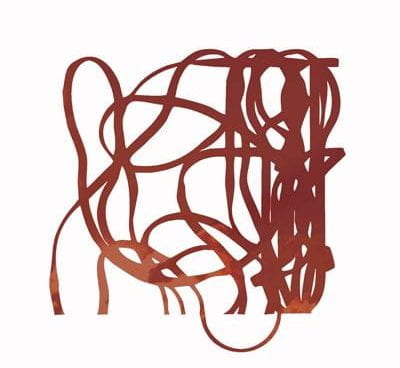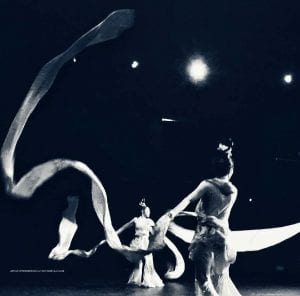
Chinese scarf and silk dance (巾舞 Jīn wǔ) refers to a dance where the practitioner holds a scarf or silks and is one of the unique creative art forms to emerge from ancient Chinese dance. The use of scarves helps to not only improve the muscular strength of the dancer in the movements it requires but also greatly expands the expressive power of the dancer’s body and allows emotional expression to become yet more vivid.
The history of the scarf dance can be traced back to the Han Dynasty (202 BC ~ 8 AD) in China. Han Dynasty stone portraits show rich images of this form of scarf dance that depict different shapes and vivid life. This highly expressive type of dance matured in the Han Dynasty and has a long history that has been passed down to the present day.
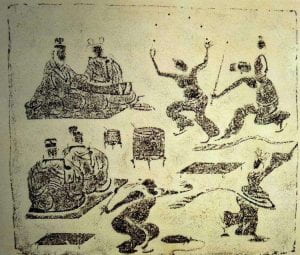
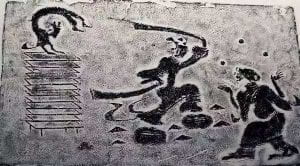
Many images of dancers holding a scarf can be found in different artistic and historical representations of Chinese classical and folk dance. One of the most well-known forms is Dunhuang dance, which is also known as Chinese ribbon dance. This dance is represented in the Buddhist paintings that appear in the Mogao Caves located in a desert along the former silk road in Dunhuang in north-central China.
The ancient Mogao Cave murals show many depictions of Feitian, a type of ethereal flying being. Feitian are said to have beautiful voices and sing wonderful songs; the long silks they wear float and flutter in the sky, showing their freedom and elegance. Feitian dancing with long silks is one of the most distinctive features of the dance postures of these Dunhuang depictions.
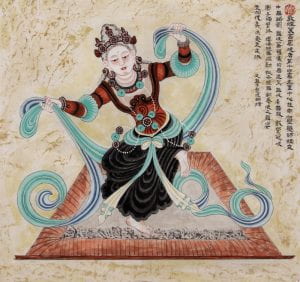
Performing with long silks and ribbons in one’s hands was a vibrant dance form popular in imperial China and favoured by Chinese nobility. This long silk dance is also a foundation of today’s Chinese ribbon dance (a branch of classical Chinese dance). During training, it is necessary to combine manipulation of silk with graceful body contortions as well as specific rhythmic body movements and a momentum that gives the audience the sense that the dancer is floating and air-bound.
In 2019, here at Goldsmiths Confucius Institute, we began the department’s very first Chinese ribbon dance short course in order to introduce this art form to Goldsmiths staff and students and the local community here in Lewisham.
The content of the Chinese ribbon dance course consists of three main parts:
- Body movement training
- Ribbon skills training
- Dance clips training
This dance course absorbs teaching techniques from Beijing Dance Academy, we hope that through this course, students will feel the elegance of Dunhuang dance, the lightness and beauty of silk and let this unique Chinese art form help them to fully awaken their bodies and gain inner peace and freedom.
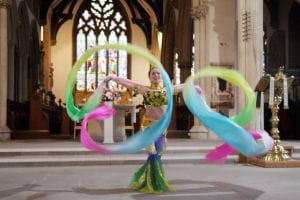
Xueting graduated from China’s leading institution for dance training, Beijing Dance Academy. Her main research directions are Chinese dance aesthetics, Chinese classical dance and universal dance education.
Xueting currently oversees the Chinese ribbon dance short course here at Goldsmiths and is a member of the department’s Outreach for Schools programme, which provides Chinese dance and arts learning experiences in schools across the UK.
